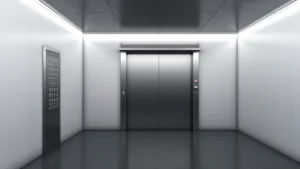Table of Contents
ToggleReplace the Elevator
Replacing the elevator in your building can seem like a daunting task, but it is essential for ensuring the safety and convenience of your tenants. An aging elevator can lead to numerous issues, from long wait times to mechanical failures. In this article, we will explore the process of replacing the elevator and why maintaining a state-of-the-art system is crucial for any building owner or manager.
When you decide to replace the elevator, the first step involves understanding the needs of your building. Consider how much traffic your elevator handles on a daily basis. For instance, a busy commercial building with multiple offices will require a different elevator than a residential apartment complex. Assess the existing system and identify any limitations that affect performance. For example, a slow elevator can frustrate tenants and reduce the attractiveness of the property. By replacing the elevator, you can help to mitigate such issues.
One of the most significant advantages of replacing the elevator is improved efficiency. Modern elevators are designed with advanced technology that allows for faster travel times and smoother rides. Imagine a scenario where an office worker needs to go to the tenth floor for an important meeting. With a new elevator system, they can arrive at their destination promptly, allowing them to focus on their work rather than worrying about delays. Additionally, newer models often consume less energy, leading to lower utility costs for property managers and a decreased carbon footprint.
Another key aspect to consider when you replace the elevator is the safety features. Old elevators may not meet current safety codes and regulations. For example, outdated systems lack important features like emergency communication systems or sensors that detect obstructions. By investing in a new elevator, you enhance the safety of building occupants. When tenants feel secure, they’re more likely to stay in the building long-term, reducing turnover rates and increasing rental income.
It’s also vital to consider the aesthetics and user experience when replacing the elevator. Today’s elevators come with customizable features that allow for a modern and appealing design. For instance, glass doors, LED lighting, and stylish interiors can make a big difference in how the elevator feels. Imagine walking into a sleek, contemporary elevator that reflects the building’s overall ambiance, as opposed to an outdated, cramped space. This fun experience can truly enhance the tenant’s impression of the building.
In addition to aesthetics, think about the service options available with new elevators. Many modern systems offer smart technology that allows for remote monitoring and diagnostics. This means property managers can easily track performance, schedule maintenance, and identify issues before they escalate. For example, if a problem is detected, it can be addressed promptly rather than waiting for an inconvenient breakdown. Thus, when you replace the elevator, you not only improve reliability but also simplify property management tasks.
In conclusion, replacing the elevator in your building is not just a matter of compliance or functionality; it’s an investment in the future. Improved efficiency, enhanced safety, modern aesthetics, and smarter technology all contribute to a better living or working environment. As you consider the numerous benefits and implications of this significant decision, ask yourself how a new elevator could transform the experience for tenants and boost the value of your property. Ultimately, a well-chosen system that meets your building’s needs will ensure that you are providing the best possible service to your tenants, keeping them happy, safe, and satisfied.
So, as you contemplate your next steps, remember that it’s essential to replace the elevator not just for operational reasons, but also to elevate the entire experience for everyone involved. This decision could change the landscape of your property for years to come.


